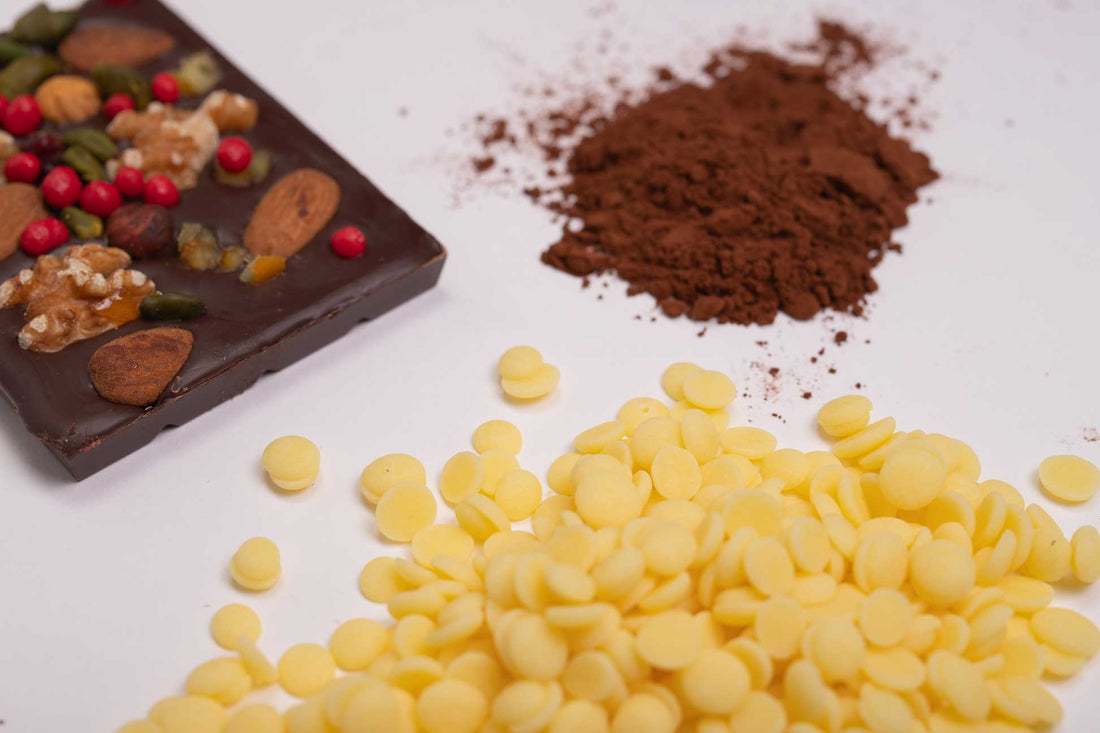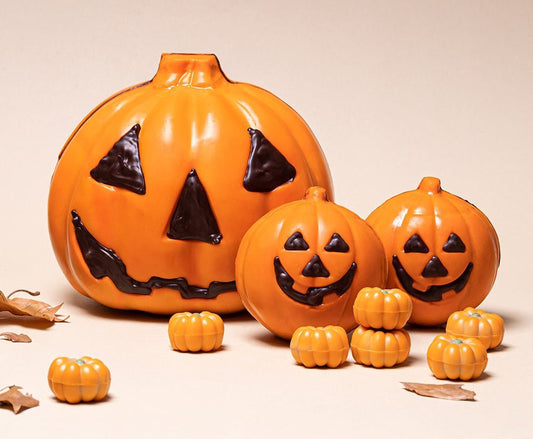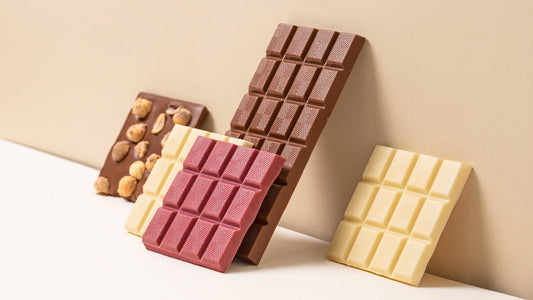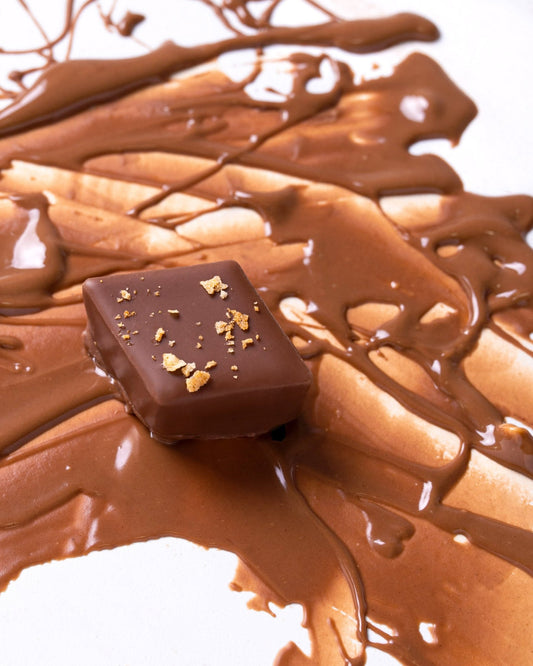Does Chocolate Contain Gluten? Discover the Truth and How to Choose Wisely
Bombonería PonsTable of content
- 1. What Is Gluten and Where Is It Found?
- 2. Chocolate Composition: Basic Ingredients
- 3. How Can Gluten Get Into Chocolate?
- 4. How to Identify Gluten-Free Chocolate
- 5. Artisan vs. Industrial Chocolate
- 6. Benefits of Gluten-Free Chocolate
- 7. Brands and Certifications to Consider
- 8. Strategies for People with Celiac Disease or Gluten Sensitivity
- 9. Frequently Asked Questions: Myths and Facts
- 10. Delicious and Safe Alternatives
- 11. Conclusion
What Is Gluten and Where Is It Found?
Chocolate is one of the most universal pleasures, enjoyed by people of all ages. But for those living with celiac disease or gluten sensitivity, a key question arises: Does chocolate contain gluten? In this article, we explain everything you need to know to enjoy chocolate with confidence and safety.
Gluten is a protein found in grains such as wheat, barley, and rye. Many people must avoid it due to a diagnosis of celiac disease, non-celiac sensitivity, or personal preference. Although we usually associate gluten with products like bread and pasta, its derivatives can be present in less obvious foods, such as certain types of sweets and chocolates.
Chocolate Composition: Basic Ingredients
Natural chocolate is mainly composed of cocoa, cocoa butter, and sugar. When we analyze these basic ingredients, none come from gluten-containing grains. Therefore, chocolate in its purest form is gluten-free. However, the market offers a wide variety of processed chocolates that may contain other ingredients.
- Dark chocolate: usually contains only cocoa, butter, and sugar.
- Milk chocolate: includes powdered or condensed milk.
- White chocolate: is made with cocoa butter, milk, and sugar.
The most important thing is to distinguish between pure chocolate and those with additives, as that is where risks may arise.
How Can Gluten Get Into Chocolate?
While pure chocolate does not naturally contain gluten, there are several ways gluten can contaminate the product:
- Added ingredients: Some brands add cookies, wafers, cereals, or fillings that contain gluten.
- Cross-contamination: Factories that process both chocolate and other gluten-containing products can cause cross-contamination if strict protocols are not followed.
- Thickeners and flavorings: Some additives used to give texture or flavor may be derived from gluten-containing grains.
For this reason, people who are sensitive should read labels very carefully and be familiar with production processes.
Examples of Chocolates That May Contain Gluten
- Filled chocolates with cookies, truffle, or praline.
- Chocolates with pieces of cake or puffed cereals.
- Chocolates with toppings, such as wafers or pretzels.
Even products that seem simple may contain traces of gluten due to shared equipment.
How to Identify Gluten-Free Chocolate
The key to choosing wisely is the information on the packaging. Here are some useful tips:
- Look for the gluten-free stamp: Many products have an official symbol guaranteeing the absence of gluten.
- Check the ingredients list: Compounds derived from wheat, malt, barley, or rye indicate the presence of gluten.
- Read allergen warnings: Phrases like "may contain traces of gluten" mean that the product is not 100% safe for people with celiac disease.
- Prefer single-ingredient chocolates: High purity chocolates are usually less problematic.
Whenever in doubt, contact the manufacturer directly or look for certified products.
Artisan vs. Industrial Chocolate
Both types have different advantages and risks with respect to gluten.
- Artisan chocolate: Is usually made with fewer ingredients and greater transparency, although it does not always have official certifications. It is essential to confirm the absence of contaminants.
- Industrial chocolate: Has stricter controls, clear labeling, and tends to identify possible traces, although large-scale processing can increase the risk of unwanted gluten exposure.
Whether shopping in physical stores or online, search specifically for products for people with celiac disease.
Benefits of Gluten-Free Chocolate
Enjoying gluten-free chocolate is not only possible, but also recommended for those who need to look after their digestive health. Choose safe options and take advantage of all these benefits:
- Allows you to enjoy traditional texture and flavor without worry.
- Contributes to a varied diet adapted to dietary restrictions.
- There are gluten-free chocolates rich in antioxidants, minerals, and low in sugar.
- Vegan and dairy-free options also tend to overlap with gluten-free chocolates, offering greater variety.
Brands and Certifications to Consider
There are more and more brands targeting people with food intolerances. Look for packaging with certifications from national or international celiac organizations, which guarantee the product's safety.
- The crossed grain stamp is the most recognized and trustworthy.
- Associations back regular audits of manufacturers.
- Many brands have special gluten-free product lines that are clearly labeled.
Strategies for People with Celiac Disease or Gluten Sensitivity
Living gluten-free means staying well-informed, especially with processed foods like chocolate. These recommendations will help you avoid risks:
- Always read the label, even if it's a familiar brand.
- If you buy bulk or artisan chocolate, ask directly about the ingredients.
- Opt for simple chocolates rather than those with mixes, fillings, or decorations.
- When traveling or shopping online, consult updated lists of safe products and the websites of specialized organizations.
Ongoing education and self-care are key to maintaining enjoyment without unnecessary risks.
Frequently Asked Questions: Myths and Facts
There are many common questions about whether chocolate contains gluten. Here, we answer the main ones:
- Is all chocolate suitable for people with celiac disease? Not necessarily; it depends on its composition and potential contamination.
- Is dark chocolate always gluten-free? Generally yes, but always check the label—especially flavored chocolates.
- Are traces dangerous? For people with celiac disease, they can be risky, so it is best to avoid them entirely.
- Is imported chocolate safe? Only if it has the certification or a clear gluten-free statement.
Be proactive in researching the brand and demand high quality standards.
Delicious and Safe Alternatives
There's no need to give up the pleasure of chocolate if you have to avoid gluten. Here’s how you can vary and enjoy with peace of mind:
- Certified organic gluten-free chocolates.
- Homemade treats using pure cocoa and your favorite sweeteners.
- Bars and bonbons made especially for people with celiac disease.
- Desserts made with gluten-free chocolate and safe accompaniments.
The selection grows every day, making it easy to find safe and tasty options for everyone.
Conclusion
Knowing whether chocolate contains gluten is essential for those who need to watch their diet. Make informed choices, read labels, and always go for certified products to enjoy chocolate safely. Choose wisely and keep delighting in this true pleasure!





